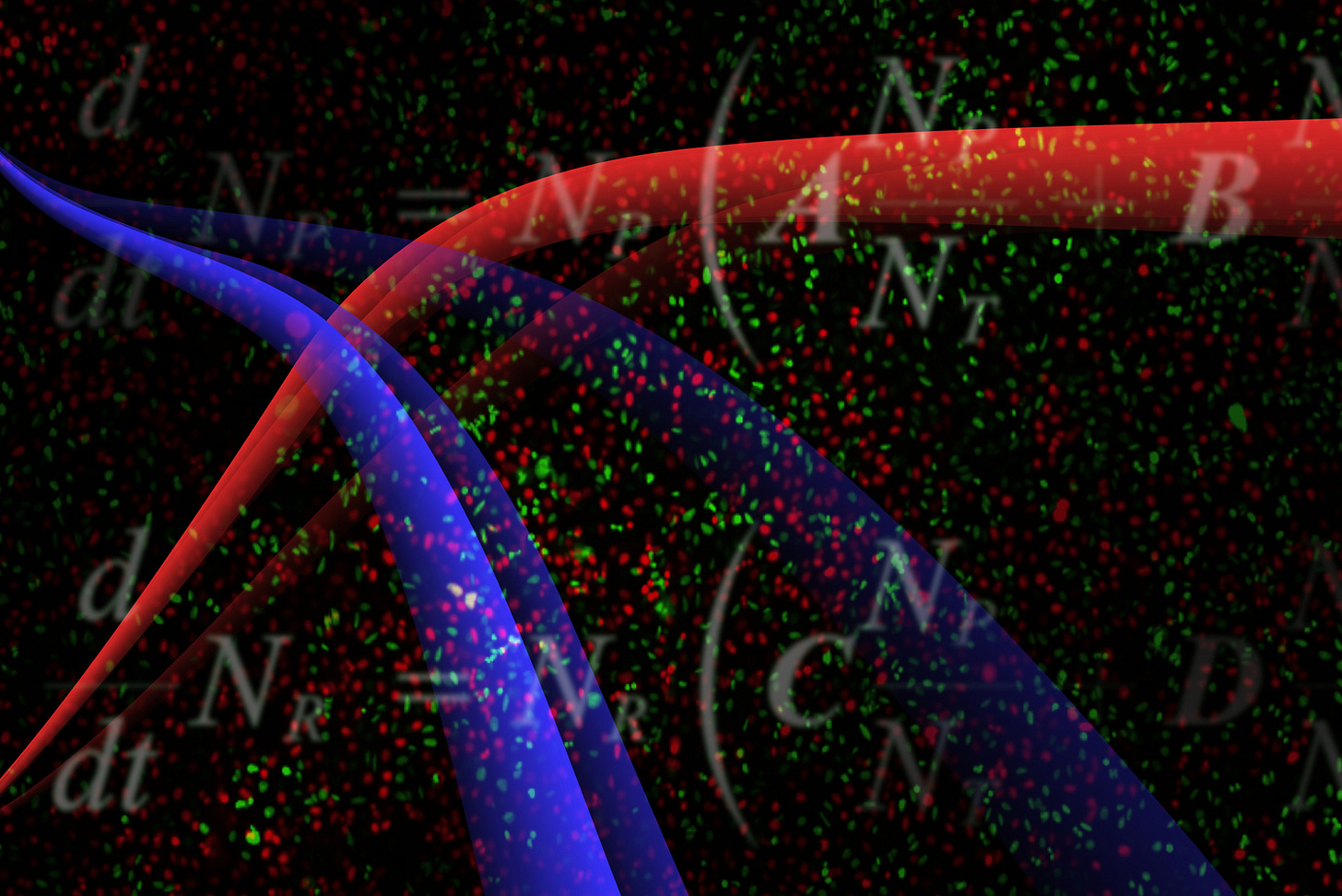This week in MathOnco 221
Cancer metabolism, metronomic therapy, spatiotemporal modeling, tumor-immune interactions, clonal heterogeneity and phylogenetic trees.
“This week in Mathematical Oncology” — Aug. 4, 2022
> mathematical-oncology.org
From the editor:
Today we feature articles on cancer metabolism, metronomic therapy, spatiotemporal modeling, tumor-immune interactions, clonal heterogeneity and phylogenetic trees.
Enjoy,
Jeffrey West
jeffrey.west@moffitt.org
"PhD students tend to choose a lab based on the topic, but a creative and supportive environment is more important. If everyone in the lab is miserable, you will probably be miserable there too; and if they are happy and thriving, you'll also likely feel good about yourself there."
- Itai Yanai1
Measuring competitive exclusion in non–small cell lung cancer
Nathan Farrokhian, Jeff Maltas, Mina Dinh, Arda Durmaz, Patrick Ellsworth, Masahiro Hitomi, Erin McClure, Andriy Marusyk, Artem Kaznatcheev, Jacob G. ScottIntegrating a dynamic central metabolism model of cancer cells with a hybrid 3D multiscale model for vascular hepatocellular carcinoma growth
Alexey Lapin, Holger Perfahl, Harsh Vardhan Jain, Matthias ReussRevisiting metronomic vinorelbine with mathematical modelling: a Phase I trial in lung cancer
Fabrice Barlesi, Laure Deyme, Diane-Charlotte Imbs, Elissa Cousin, …, Annick Pelletier, Nicolas André, Joseph Ciccolini, Dominique BarbolosiSimulations of tumor growth and response to immunotherapy by coupling a spatial agent-based model with a whole-patient quantitative systems pharmacology model
Alvaro Ruiz-Martinez, Chang Gong, Hanwen Wang, Richard J. Sov́e, Haoyang Mi, Holly Kimko, Aleksander S. PopelDetection and Spatiotemporal Analysis of In-vitro 3D Migratory Triple-Negative Breast Cancer Cells
Nikolaos M. Dimitriou, Salvador Flores-Torres, Joseph Matthew Kinsella & Georgios D. MitsisA model for the intrinsic limit of cancer therapy: Duality of treatment-induced cell death and treatment-induced stemness
Erin Angelini, Yue Wang, Joseph Xu Zhou, Hong Qian, Sui HuangMathematical modeling of tumor-immune system interactions: the effect of rituximab on breast cancer immune response
Vasiliki Bitsouni, Vasilis Tsilidis
SMITH: Spatially Constrained Stochastic Model for Simulation of Intra-Tumour Heterogeneity
Adam Streck, Tom Kaufmann, Roland F SchwarzUnified Tumor Growth Mechanisms from Multimodel Inference and Dataset Integration
Samantha P Beik, Leonard A Harris, Michael A Kochen, Julien Sage, Vito Quaranta, Carlos F LopezBelayer: Modeling discrete and continuous spatial variation in gene expression from spatially resolved transcriptomics
Cong Ma, Uthsav Chitra, Shirley Zhang, Benjamin J. RaphaelcloneMap: a R package to visualise clonal heterogeneity
Alexander Frankell, Emma Colliver, Nicholas McGranahan, Charles SwantonTaxonium: a web-based tool for exploring large phylogenetic trees
Theo SandersonMathematical modeling to guide experimental design: T cell clustering as a case study
Harshana Rajakaruna, Vitaly V GanusovJoint inference of exclusivity patterns and recurrent trajectories from tumor mutation trees
Xiang Ge Luo, Jack Kuipers, Niko Beerenwinkel
Johann Gregor Mendel: Born to be a scientist?
Eva Matalova: ”Johann Gregor Mendel, born 200 years ago, was supposed to be a farmer, intended to be a teacher, became a priest, turned to being a researcher, and later became a world famous scientist associated with genetics. Here, we look into his life through his own words.”
The newsletter now has a dedicated homepage where we post the cover artwork for each issue. We encourage submissions that coincide with the release of a recent paper from your group.
Caption: In our recent paper, we experimentally measured the frequency-dependent interactions between a gefitinib-resistant non–small cell lung cancer population and its sensitive ancestor via the evolutionary game assay. We showed that cost of resistance is insufficient to accurately predict competitive exclusion and that frequency-dependent growth rate measurements are required. Furthermore, using simulations, we demonstrated that incorporating ecological growth effects can influence the predicted extinction time. Together, our results highlight the potential importance of frequency-dependent growth rate data for understanding competing populations, both in the laboratory and as we translate adaptive therapy regimens to the clinic.
Created by: Erika Woodrum, Jacob Scott
Visit the mathematical oncology page to view jobs, meetings, and special issues. We will post new additions here, but the full list can found at mathematical-oncology.org.
1. Jobs
Current subscriber count: >1.25k









